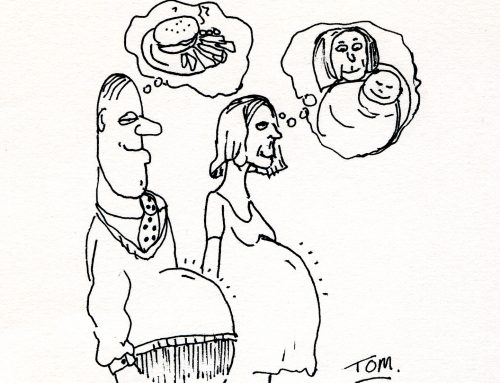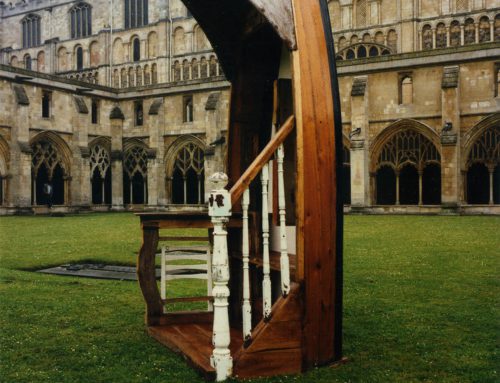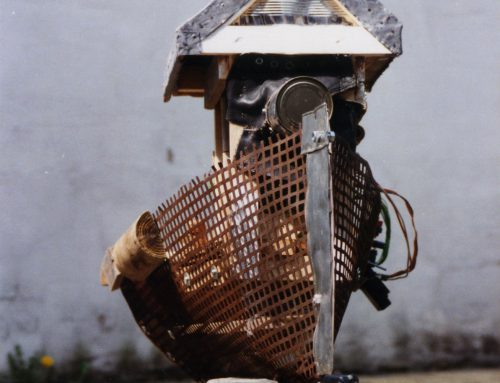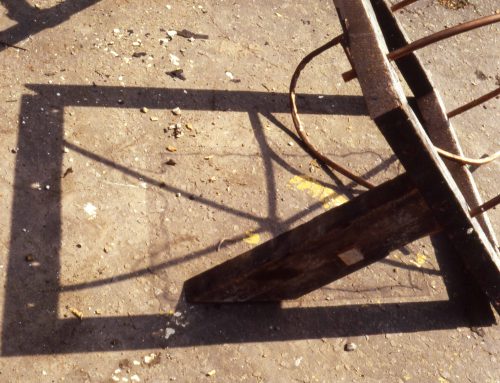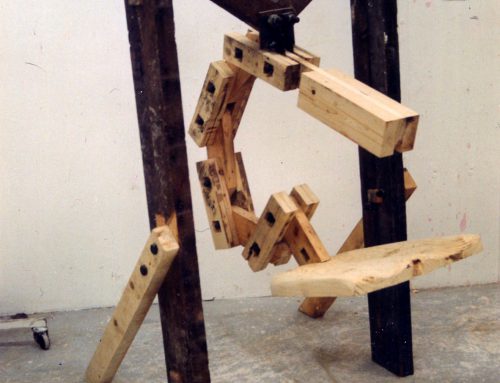In 1984, Mike Gray helped assemble a discography of Decca’s classical releases, giving him access to their engineers and recording logs, and a valuable insight into how their records were made. He reveals the truth about the famous Decca tree and the creation of the label’s unique sound.
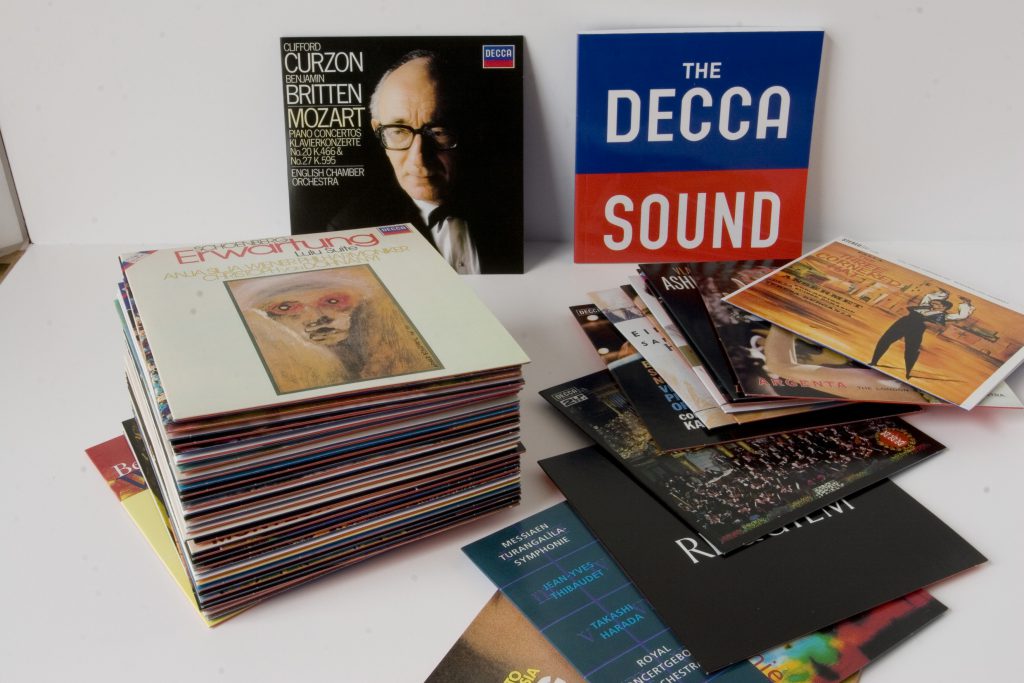
Decca Sound CDs
Mike Gray’s research into the Decca archives began in 1984, when the editor of the Gramophone classical music magazine, Malcolm Walker, asked him if he would like to work with record collector and discographer Brian Rust, who was creating a Decca discography. “We obtained permission to visit Decca at Belsize Road,” explains Mike, “which is where the studios were and the tape store was, and began looking at tapes on the shelf, which was one way to start! But it turned out to be a much more complicated project because, unlike a place like EMI, Decca was very much seat-of-the-pants in terms of documentation.
“As a result, Malcolm and I began to look at paperwork and there was a lot of it. On the producers’ side – there was something called the Musical Record of Session, which was taken at the session itself with all the takes. Then there was the Log Sheet, which was a summary of all the information that went into tracking, or putting the sequence together for the LP record.
“Then I discovered there was something called the Electrical Record of Session, which was kept completely separate by the engineers, and these almost invariably included a date of session, or at least the first session, plus an indication of the microphones being used, their placement, the tape recorder and tape being used, and who was responsible at the session – that is to say, the initials of the engineer and tape operator.
“Well, those records were particularly fascinating to me and, as I was taking notes on the dates of sessions, I started to take notes on the microphone setups, which in the 1950s were very, very simple.”
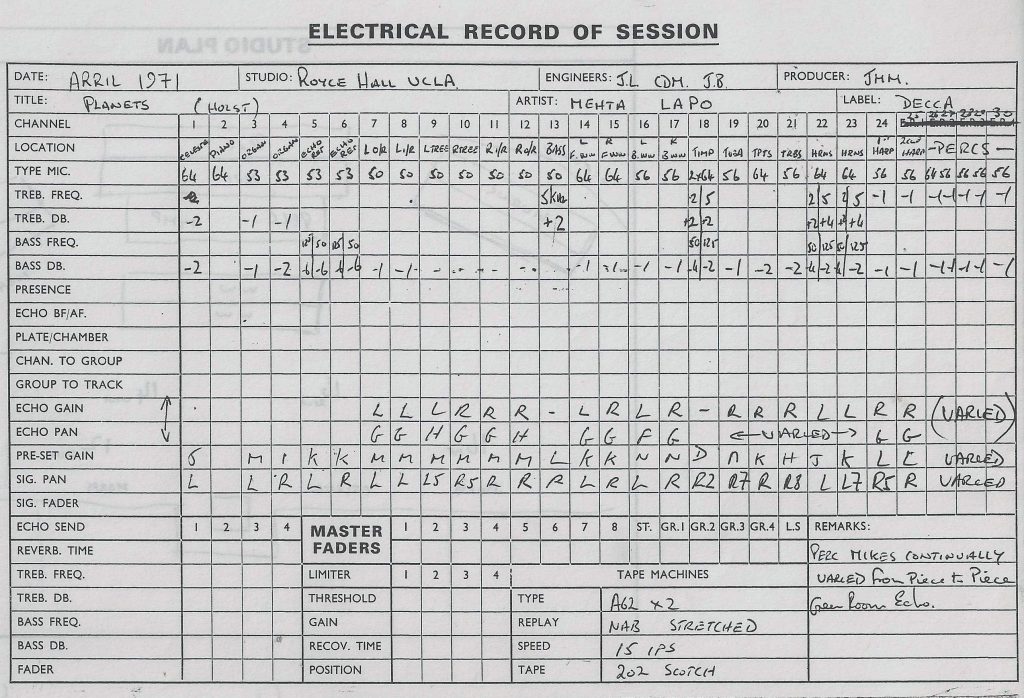
Electrical Record Of Session, Mehta Planets 1971
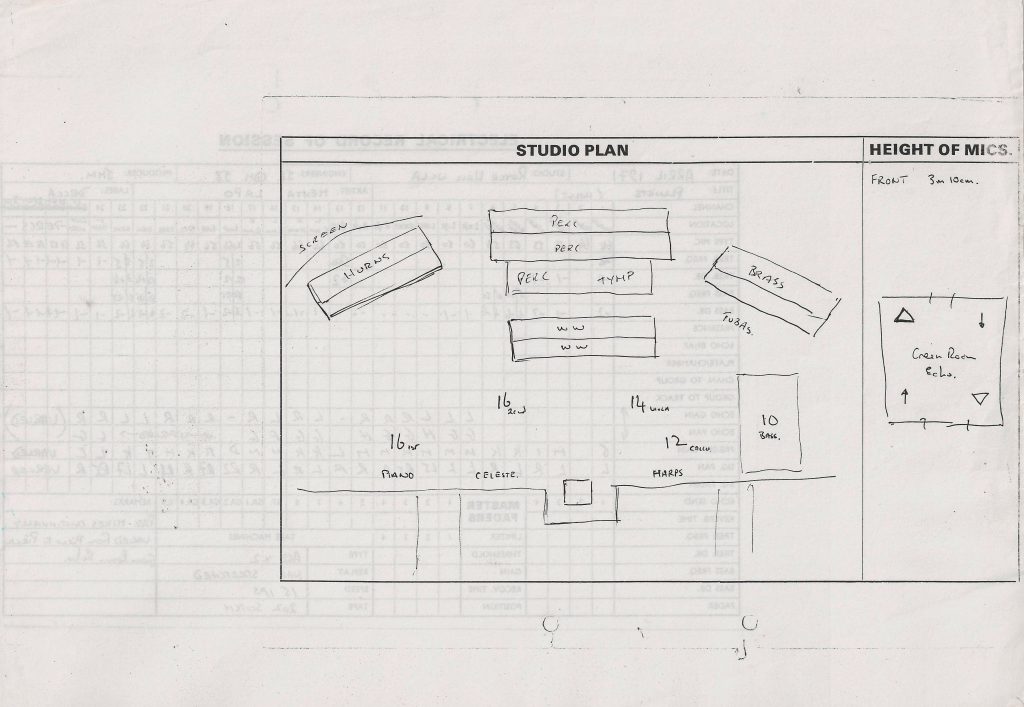
Diagram on the back of the ERS
Delving Deeper
There the story might have ended, had Mike not noticed an article in a magazine called The Absolute Sound. Mike’s attention was drawn to a piece someone had written about Decca and its techniques, which he realized was not entirely accurate. “Of course, I had all these notes and thought, ‘Oh, that’s not right,’ so I sent them a letter correcting it and The Absolute Sound editor, Harry Pearson, replied and said, ‘Why don’t you write about Decca?’
“This led me to contacting former members of Decca staff: Jimmy Brown, Gordon Perry and a number of other staff who helped me understand how sessions worked, on the technical side. And Perry was especially helpful in terms of technique and turned out to be a goldmine of information from the inside; about things that were not often published.
“Of course, in those days the technique was a closely guarded secret and, in fact, there was a ‘no poaching’ agreement between EMI and Decca. It was an informal agreement which said that when a Decca or EMI technician was let go the other company would not hire them, because they had their own little secrets. That continued well into the ’70s and ’80s even though their studios were located within a mile of each other!
“For instance, in Kingsway Hall the microphone connectors for Decca were wired one way, that is to say either male or female, whereas EMI’s were the opposite. So even though they both had facilities there until the hall closed in ’84, they were entirely separate.
“Everybody had their own technique but Decca was pretty confident they were doing the best job with the techniques they had.”
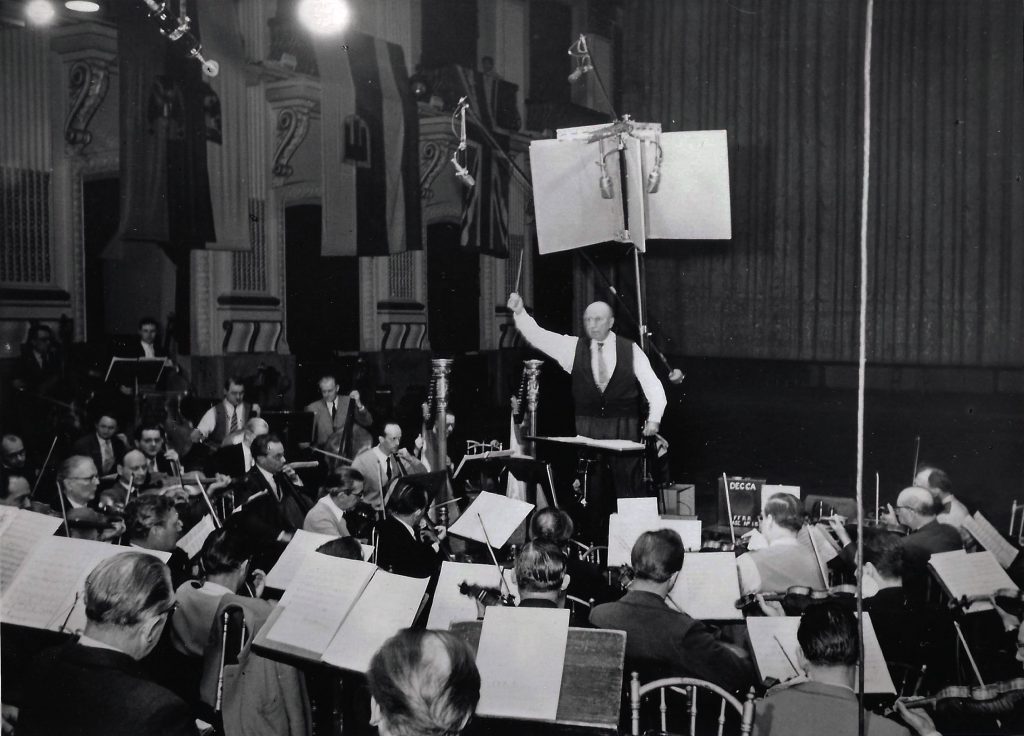
Mike: “Stolz in Vienna, recording waltzes for RCA in the Sofiensaal, June, 1958. This was the original Neumann M50 Tree designed by Roy Wallace in 1954 and used in Vienna between 1955 and the fall of 1958, when the an ‘open’ Neumann KM56 Tree was introduced.”
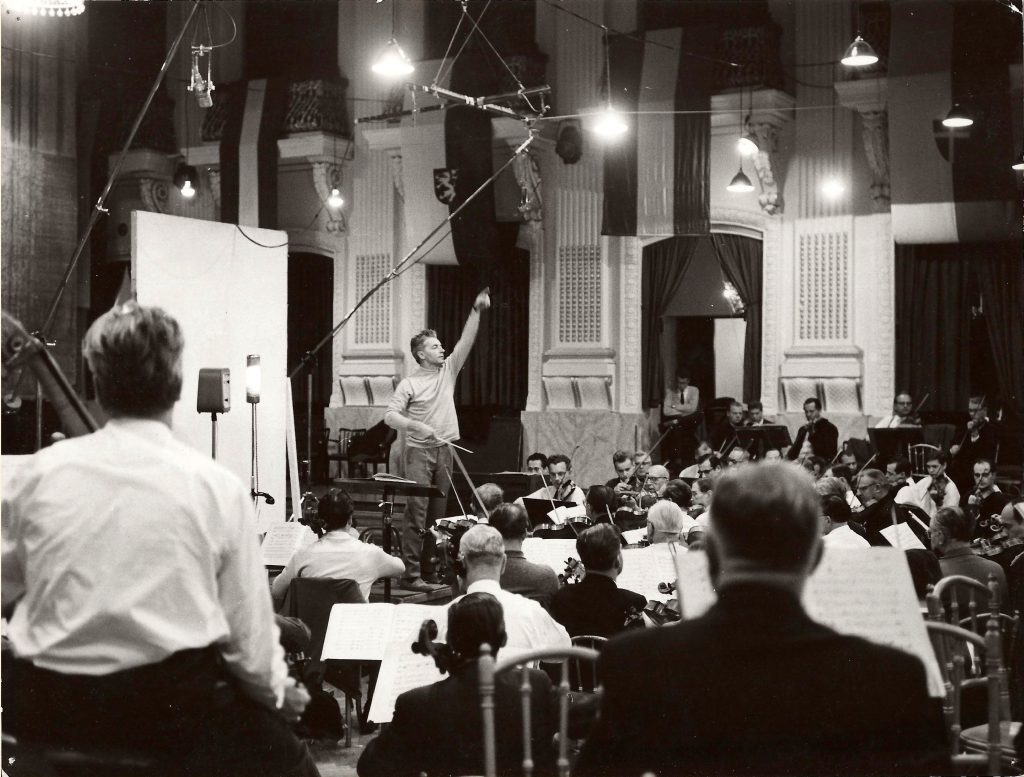
HVK Sofiensaal, with KM56 ‘open’ tree
The Studio Trees
Perhaps the most famous Decca recording technique is the one developed for recording orchestras, known as the Decca Tree, involving an arrangement of microphones which vaguely resembles the branches of tree. In its purest and simplest form, the tree uses one mic facing forward to nail the centre image, and two additional mics placed either side of the centre to capture the panoramic spread of the orchestra or band. There can’t be many audio engineering text books which do not mention the Decca Tree, or illustrate it in some way, but Mike is keen to point out that the standard representation of a Decca Tree is merely one of many arrangements tried out by Decca over the years.
“It’s not well known,” says Mike, “but there were at least seven or eight different tree formations with a variety of microphone types, and there were two philosophies of using a tree. One was the Roy Wallace philosophy which was the tree by itself, which produced a wonderful three-dimensional image; the second came from Kenneth Wilkinson who came to stereo in ’58 and decided that the tree needed help from outriggers; focussing on violins on the left, cellos on the right. Eventually their techniques blended – Wallace was using outriggers, as were other technicians.”
Not only did the shape and formation of the tree vary, so did the type of microphones that were used in each one. Decca’s favourites were Neumann models, namely the KM53, KM56 and M50.
“The original trees back in ’54, ’55, used Neumann M50s with a variety of baffles,” Mike explains. “The microphones were positioned close together so the baffles were used to isolate the mics and thereby avoid spillage from one to another. The M50 was omnidirectional mic so the fear was losing that precise centre image. They later discovered that it wasn’t necessary to baffle or have the microphones close together.
“In the early ’60s they had shoot outs. They would take an open
“Even in the 1960s they still sometimes used a tree with three baffled M50s closely spaced, but by about ’64 they finally settled on the standard tree that has mics about two feet apart, left to right, and another about one-and-a-half feet out in front, plus outriggers.
“Later on many spot microphones, echo returns and a lot of other techniques were used to create the Decca sound.”
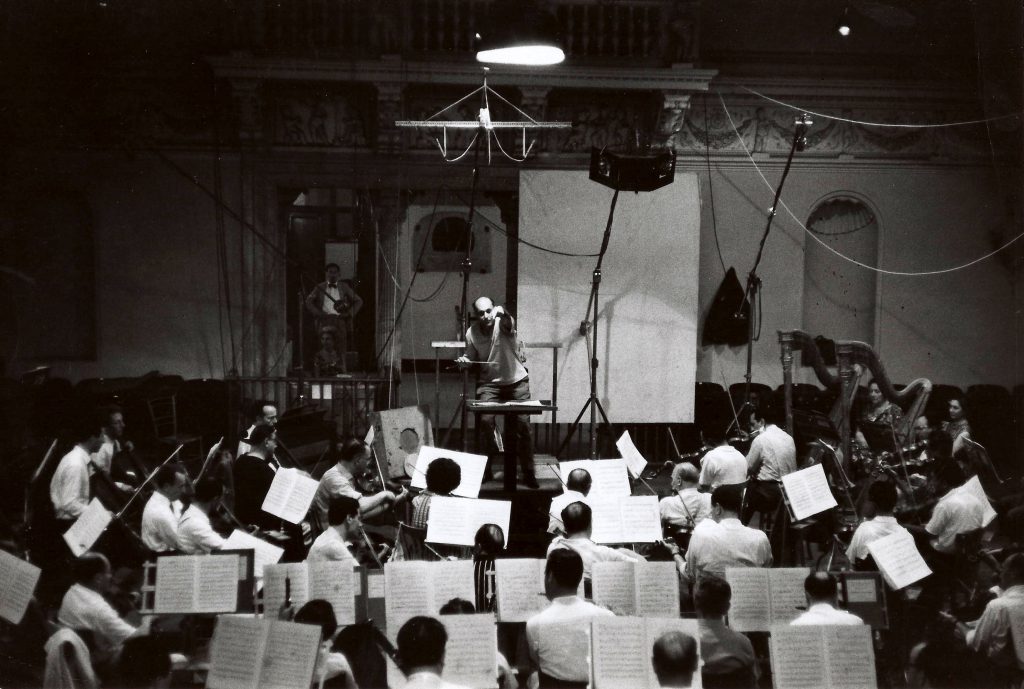
Solti Ballo Session 1961 Tree shootout
Rival Methods
Some of the recording methodologies of Decca’s rival, EMI, have been well documented thanks to the detailed accounts of The Beatles’ recording sessions at Abbey Road during the 1960s. In short, when the band first attempted to experiment they found that there were in-house rules governing the placement of microphones and use of equipment and that permission had to be sought if any standard setup were to be altered. Having interviewed many of the Decca engineers who were working during the 1950s and ’60s, Mike believes that, in general, their methods were a little less formal and that the technicians had more say in what went on during a session.
“I also did work at EMI and it’s a funny thing,” recalls Mike. “They had the crossed pair – what they called the two-headed monster – which was two Neumann’s U49s in a case. Then they changed to KM56s, and eventually started adding outriggers themselves. But it was a crossed pair that was the important part of the system and that derived from the Blumlein experiments and the tests that they were doing in the early to mid 1950s using the Stereosonic technique – and an enormous amount of electronics to shuffle the signal back and forth – and all kinds of things that really didn’t work out for them in the end. But that was R&D for EMI. At Decca it was, ‘OK, let’s get together and try something,’ so it was much looser and more independent.
“But there was a famous EMI record called Pineapple Poll, Mackerras/RPO, which was made by an entirely different engineer using an entirely different technique and it turned out to be a very successful record, so to some extent their engineers were also given latitude.
“It really depended on the setup. The orchestra was in a certain place in Abbey Road and it was in a certain place in Kingsway. It was also a certain size and had percussion here, horns there; and so you really had to adapt your microphone setup to what the orchestra was doing.”
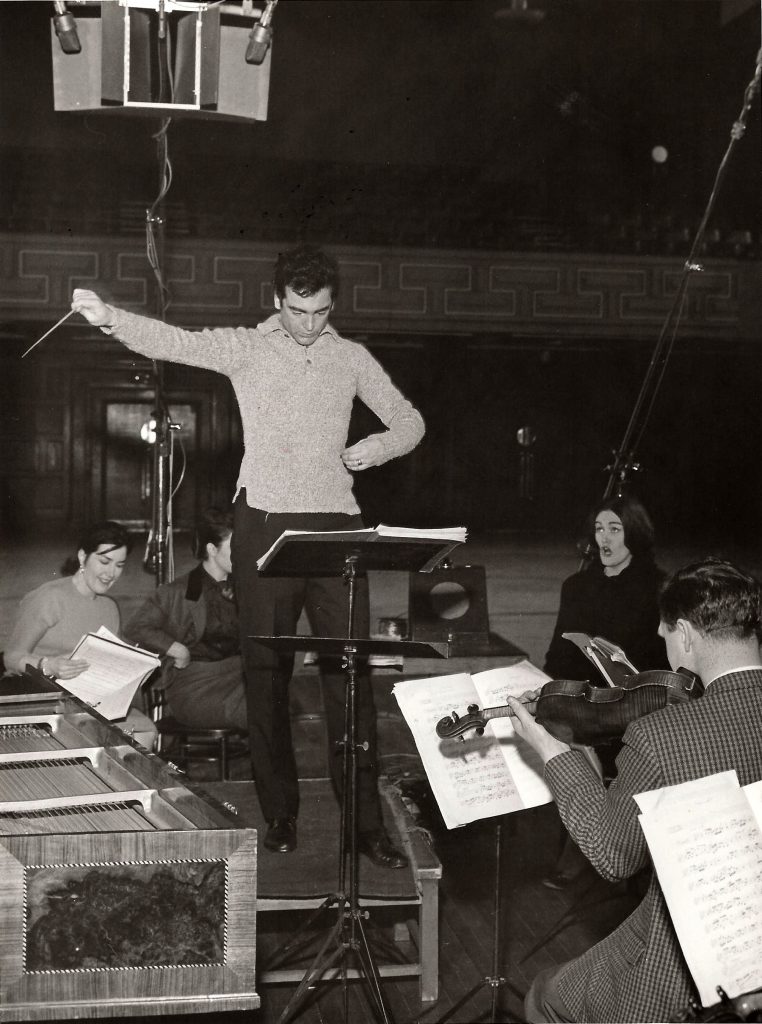
Mike: “Alcina, from 1962 sessions, March 12th, 20th to 23rd, 26th to 28th and April 3rd and 6th in Walthamstow Assembly Hall. Kenneth Wilkinson was the Balance Engineer. This photo was taken at a rehearsal; for the recording itself, the artists were on the Hall’s stage fronted by 6 microphones. A note on the Electrical Record of Session states: ‘New Head with hardboard and new design,’ to replace the previous ‘head’ unit.”
Sound Engineering
Most importantly, Decca relied on the expertise of their engineers to solve recording issues and obtain the very finest sound possible from every situation. “It was their responsibility to get that sound on tape,” says Mike. “They would work with a producer but the producer was interested in getting the takes right and working with the artist. The engineer, or his tape op, made sure that the gear worked when they turned it on, that the microphones didn’t sputter, the tree they brought in was going to work and the outriggers were set up properly. There was a rule of thumb but to a certain extent they had to adjust things by ear.
“They made diagrams on the Electrical Record of Session notes, because if they ran over to another session, or someone else took over, they could replicate the setup in terms of mic height and placement. They measured where it was set and that was put on paper. Sometimes it was as simple as tree and outriggers, but it depended on the music and the hall.
“Kingsway Hall was rather dingy but had a great sound because of its domed ceiling. Walthamstow is basically a box so you got a different sound there. In latter days Decca had acoustic signatures of all their halls and understood their frequency characteristics, but originally Arthur Haddy or Wilkinson would just walk in, clap their hands and say, ‘This sounds good, let’s use this!’”
“Kingsway was originally a Methodist hall which Decca leased in about 1926. Decca didn’t have its own studio except at Broadhurst Gardens and that was a very small venue. Kingsway was by far the best hall. Too bad that by the time it was taken out of service in the mid ’80s a lot of recording had moved to Watford and Tooting and other venues and Kingsway was taken over by the Greater London Council and turned into something else. Now it has been gutted, there’s nothing left.”
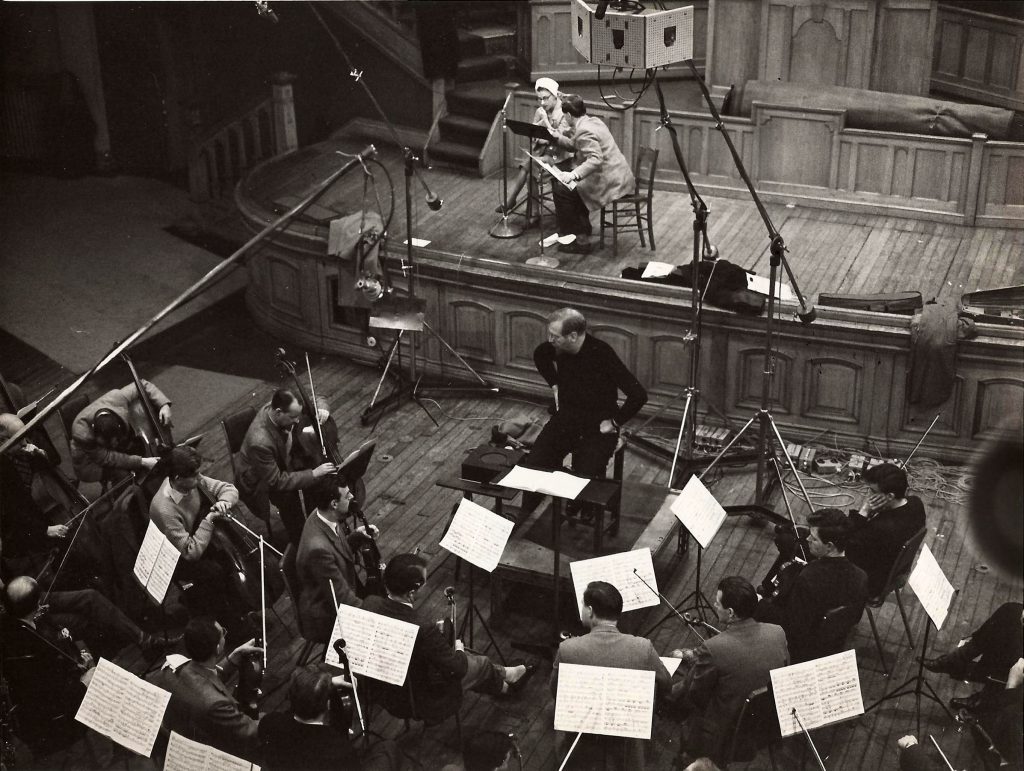
Mike: “Beatrice Lillie recording ‘Peter and the Wolf’ at Kingsway Hall, February 10th to 12th 1960, using the M50 ‘Head’ first introduced recording Mozart In Walthamstow Assembly Hall. This design, and several that followed, were intended to retain the characteristics of the omni-directional M50 while at the same time, avoiding what was then thought to be undesirable ‘bleed’ from the back side of the mics into the patterns of their neighbours.”
The Decca Sound
Differentiating the Decca sound from that of EMI by ear alone is not necessarily an easy thing to do, but Mike believes that the tracking method used by Decca caused them to mix in a particular way which can be heard on the record.
“The key to understanding the difference between Decca and EMI,” Mike explains, “is that Decca always wanted to mix to two tracks, although they had four-track backups as early the late ’50s, in case they needed to track in a singer who wasn’t on their best day, or rebalance. But the whole concept of Decca was mixing to two-track. EMI went to four-track in the mid ’60s so their records weren’t produced in stereo at the session like Decca’s.”
Mike is also keen to point out that something as fundamental as the choice of microphones had a defining affect on the general sound of Decca’s output.
The Decca sound was really the sound of the microphones,” he insists. “The M50 was omnidirectional, designed for the German radio, with a boost at the top and that was a famous Decca trait from the age of 78s, although it was tamed a bit when the discs were cut. Later they mainly used KM56s and KM53s because they were small enough to put on stands in the back but eventually they started using bigger Neumann U67s, U88s and a whole variety of spot microphones. There would often be spots behind the horn section, percussion, on the woodwind, and that also became a Decca trademark.
“They didn’t necessarily do that at EMI. But it is hard to generalise beyond the microphones and two-track, because they listened to each other’s work. There were sessions at EMI in which their record would be played against the Decca record. They were listening to each other a lot so there was sort of a convergence.”
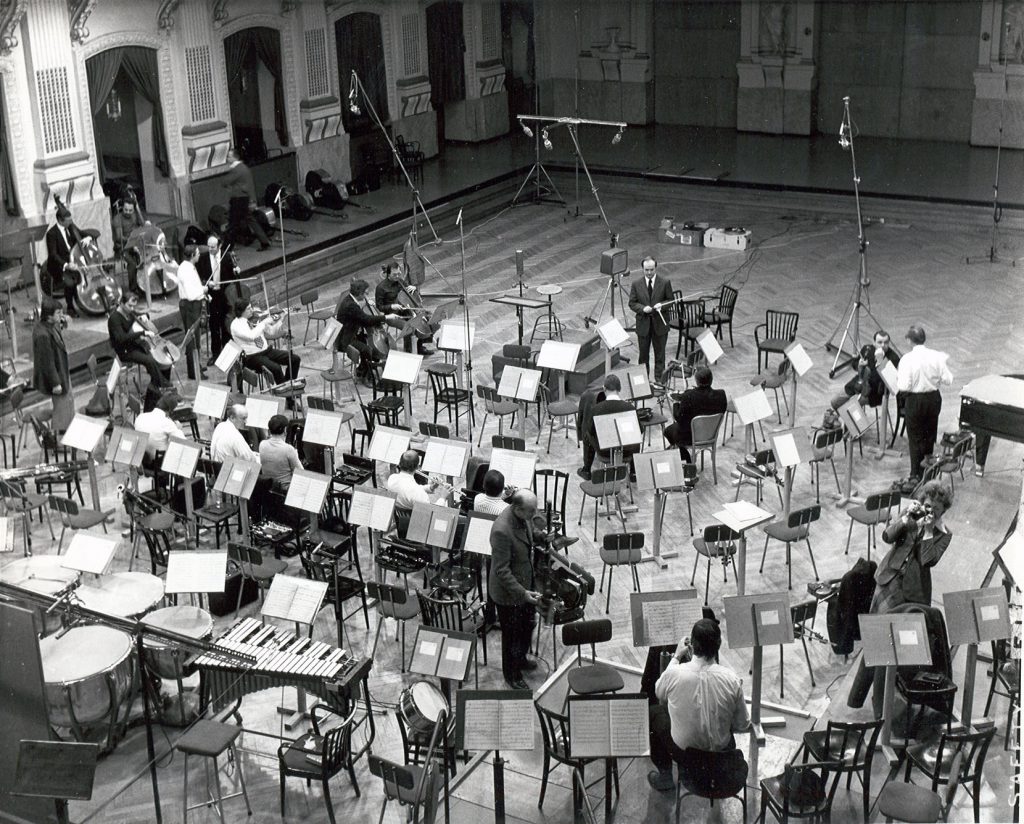
“McGill picture from a presentation by John Dunkerley. The now-familiar Tree and Outrigger setup plus needed spots. In the Sofiensaal, Vienna, early 1970s.”
Tailor Made
From studying the documents relating to the equipment, recording methods, setups and venues that Decca used, it is possible to build up a reasonably clear picture of how their signature sound was created. Nevertheless, there is yet more to it than that data alone seems to suggest, as Mike reveals.
“Everything was tweaked by the backroom guys. They might replace a microphone’s tube with a MOS-FET, or change some of the resistors to flatten it out, but the key point is that none of the equipment was stock. There was always something done to make it better – make it Decca; put the Decca imprint on it. That was, I think, the genius of Decca: the people doing the mixing were also telling the maintenance guys what they needed. That was Arthur Haddy’s work. Haddy was an engineer to his boots and wanted everything to be just right and that’s what they got.
“Roy Wallace built many of the Decca portable mixers, such as the Storm 64, which had the ability to mix 24 microphones into two tracks and was used all over the world. He developed the cleanest, simplest and most flexible mixers and it was all built in-house. You didn’t go to Neve in those days, you built your own.
“But the gear was nothing unless you had operators who knew how to use it. It’s inaccurate to say it was flat at the board because they made adjustments depending on the piece of music and where they could put the microphone. If you look at the Electrical Records of Session you see all kinds of fixes on the way to tape. Unless you see these documents in bulk you don’t realise how much tweaking was done to get the sound onto the tape, in the way they wanted it.
“In a pan situation a microphone would be a little bit left or right, there was always EQ used on the board, either a little less bass, a little more treble; plus this, minus that, on the way to tape. So for instance, the tympani might have its own mic but it would be minus five at the bass. Somebody else would have plus three at the top for a little bit more bite.”
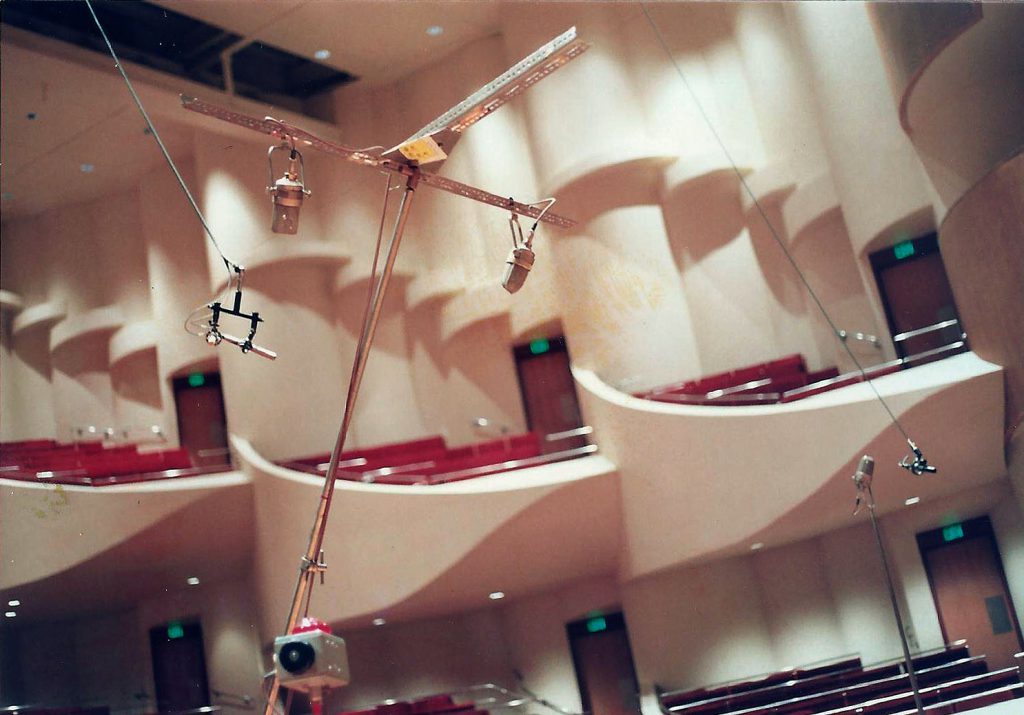
BSO Torke Sessions, October 1990
Compressors Off
The sound of rock and pop music is very much shaped by various kinds of compression and distortion. Classical recordings, on the other hand, tend to have a greater dynamic range and aim to capture the instruments as they are by affecting them as little as possible. It is still necessary to process the sound to a certain degree so that it can be reproduced on domestic playback systems, but automatic levelling tools such as compressors, which fundamentally alter the sound in a variety of ways, have not generally been used at the recording stage.
“Compression was something used in the pop world to get maximum dB on the tape for AM radio,” says Mike. “Decca didn’t use compression for classical recording but there was gain riding. The idea was that a loud movement would peak at zero, but the soft movements also had to come close to match. We’re not talking about ferocious gain riding, just little tweaks.
“The overall gain was basically set, but the other parts were adjusted depending on what the producer wanted. There’s an instance in the last movement of the Szell/Curzon Brahms Piano Concerto No.1 where you can hear the gain being pulled up because it was too low. But it was done very subtly and a good operator would never reveal in the sound that you got off the record that he had been doing that. But they had to do it.
“When Kenneth Wilkinson worked with conductor Charles Gerhardt for Reader’s Digest, Gerhardt was saying ‘Coming up, we’ll need a little more of this, coming up, a little less of that,’ and Wilkinson would have been moving the potentiometers a little bit here and there. So the producer was listening to the music and anticipating what was going to happen.
“It was the same for VHF radio as it was for record. There was a rule that said you couldn’t have more than so much dB dynamic range and you subtly took care of that. It was not for instrumentation, it was for the home and they knew it.
“There were also compromises at the disc cutting stage which was another key factor in the Decca sound. Arthur Haddy was a fanatic about getting the sound on disc, but to make a stereo disc you had to cut the bass and blend it below 100Hz so that the vertical motion would not be too extreme for styli tracking. And they would cut at half speed in the early days to get the maximum number of Watts onto disc. The cutters were not helium cooled and the engineers were afraid that they might short out, which would be expensive to fix. You had to have the EQ network and get the tape playback to work properly, but it made a lot of sense to get all that sound without too much compromise.”
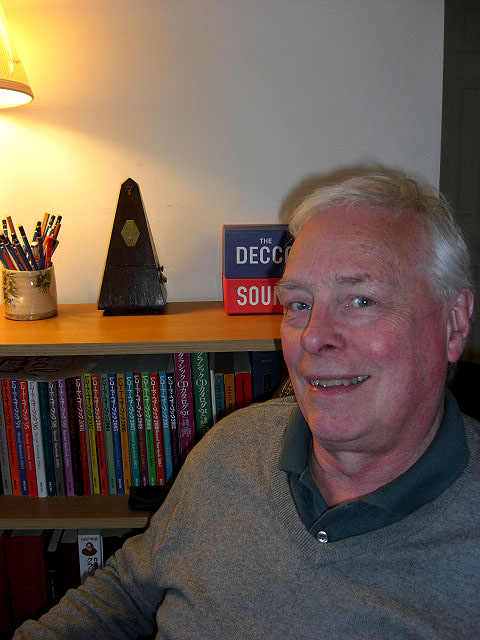
Mike Gray in January 2012
Written Notes
When Decca decided to release The Decca Sound box set, comprising 50 CDs of classic recordings selected to broadly represent their repertoire, it was Mike they asked to write the accompanying booklet notes. A winner of the 2011 ARSC Lifetime Achievement Award, in recognition of his work in published recorded sound research, Mike served four years on the staff of the Washington Library of Congress before directing the Voice of America Research Library and Digital Audio Archive projects.
Over the years he has served as a consultant and resource for countless historical reissues, and is the author of numerous articles, reviews, books and discographies, including The Birth of Decca Stereo and Classical music, 1925-1975.
Mike was, therefore, the natural choice to sum up the story of Decca classics, especially now that many of the key engineers involved have died.
“I was very flattered to be asked to write it,” admits Mike. “I knew most of these people personally. Almost all of them are gone now so this is a tribute to what they were doing.
“It was Ray McGill and the team over at Decca who picked the records but my assumption is that it is an attempt to show the entire artistic contribution to Decca. There are many things I would love to see included but all of the important artists are there, from the real maturity of stereo recording right through to today. And the thing that ties it all together is that tree and the people who knew how to use it.” TF
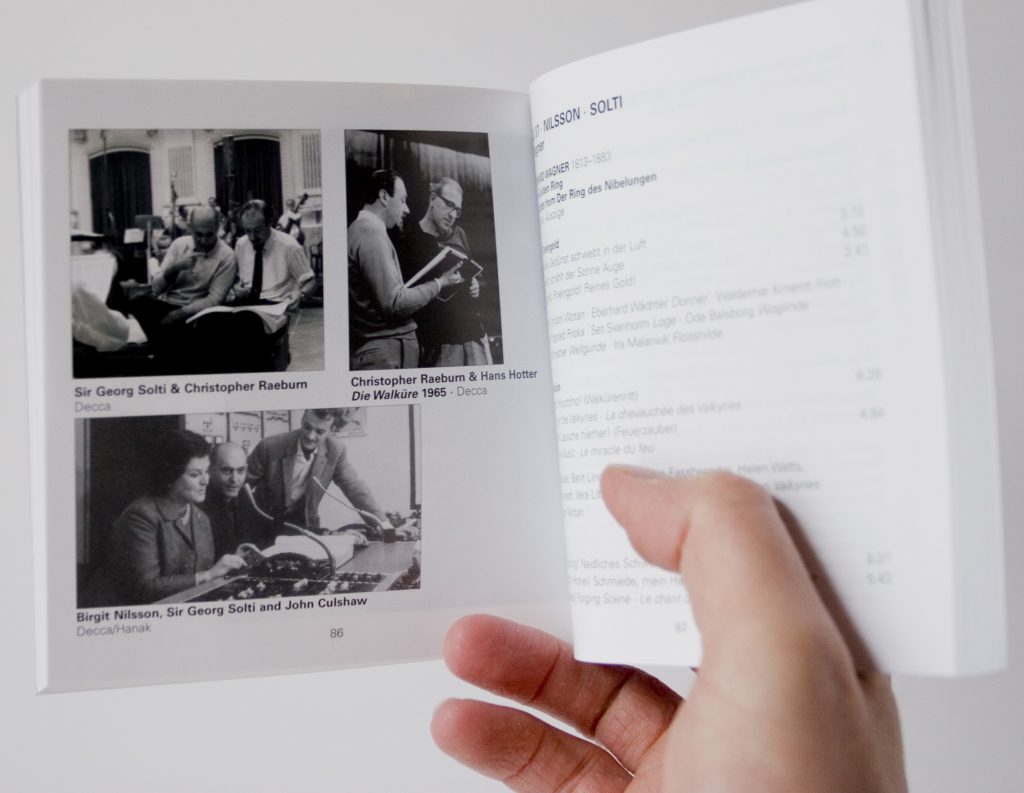
A view inside the 200-page booklet, with notes from Mike


